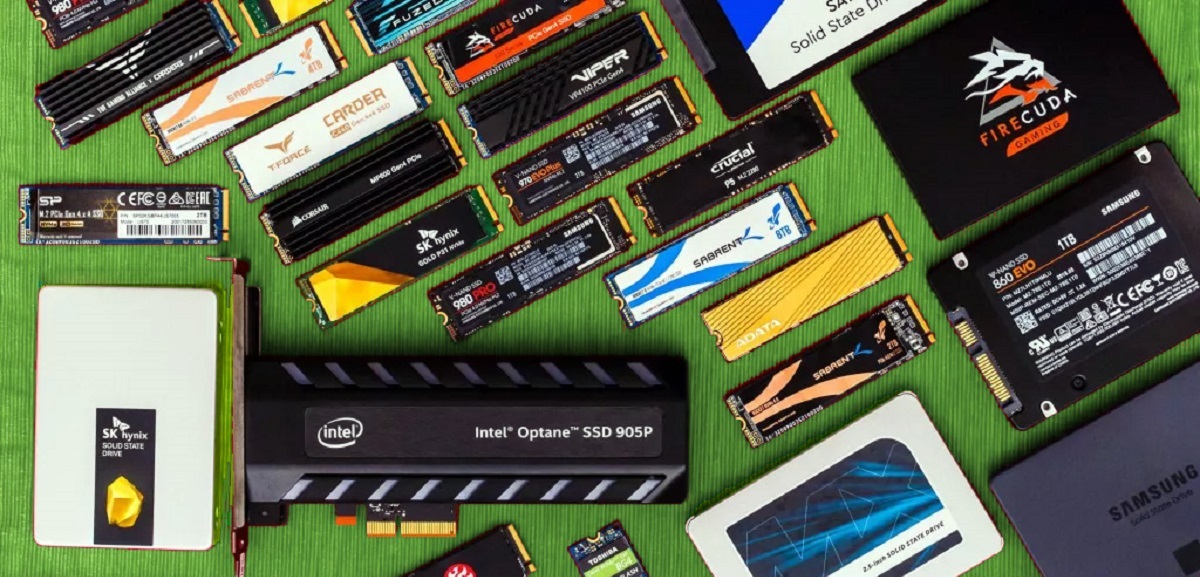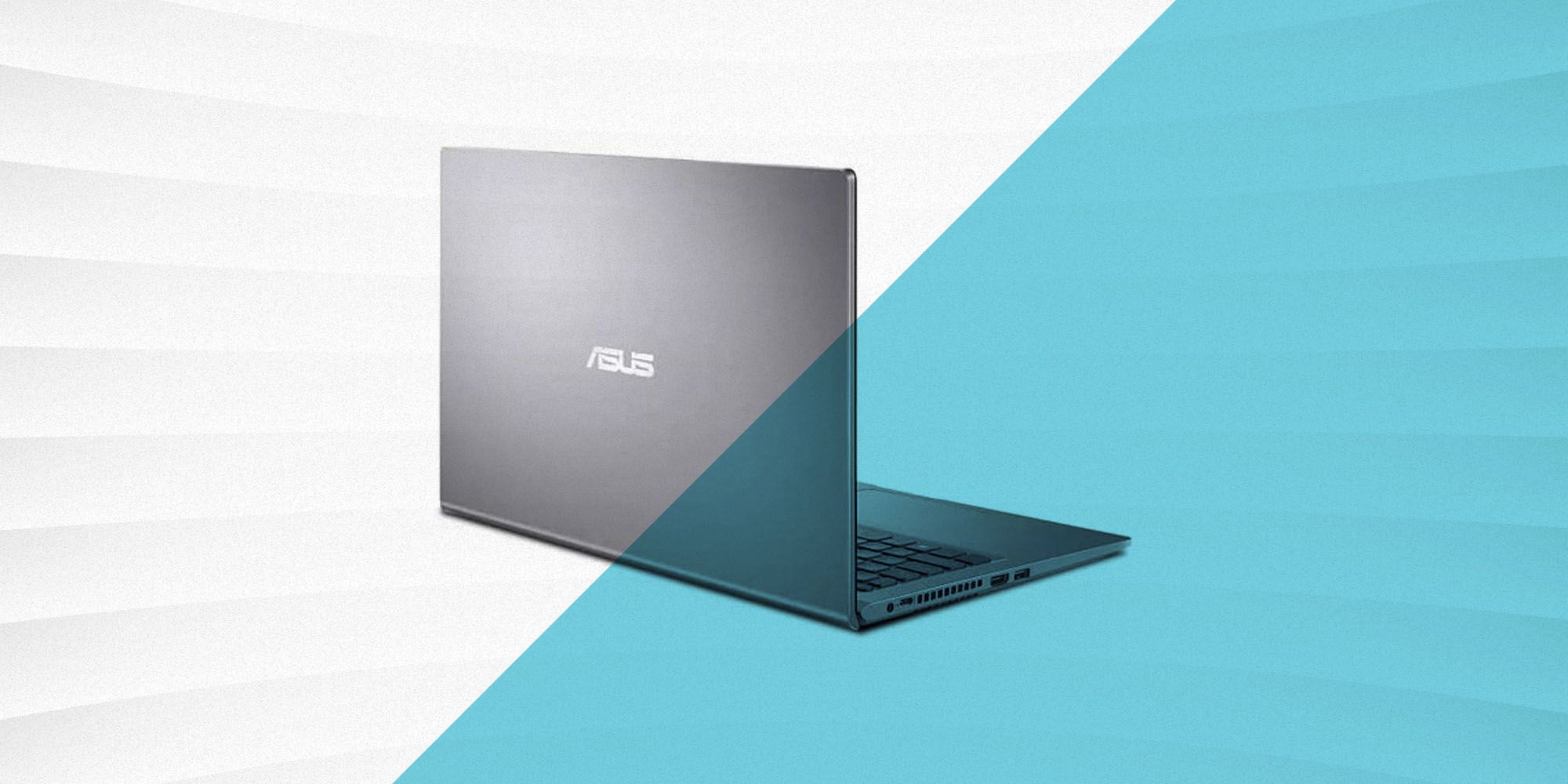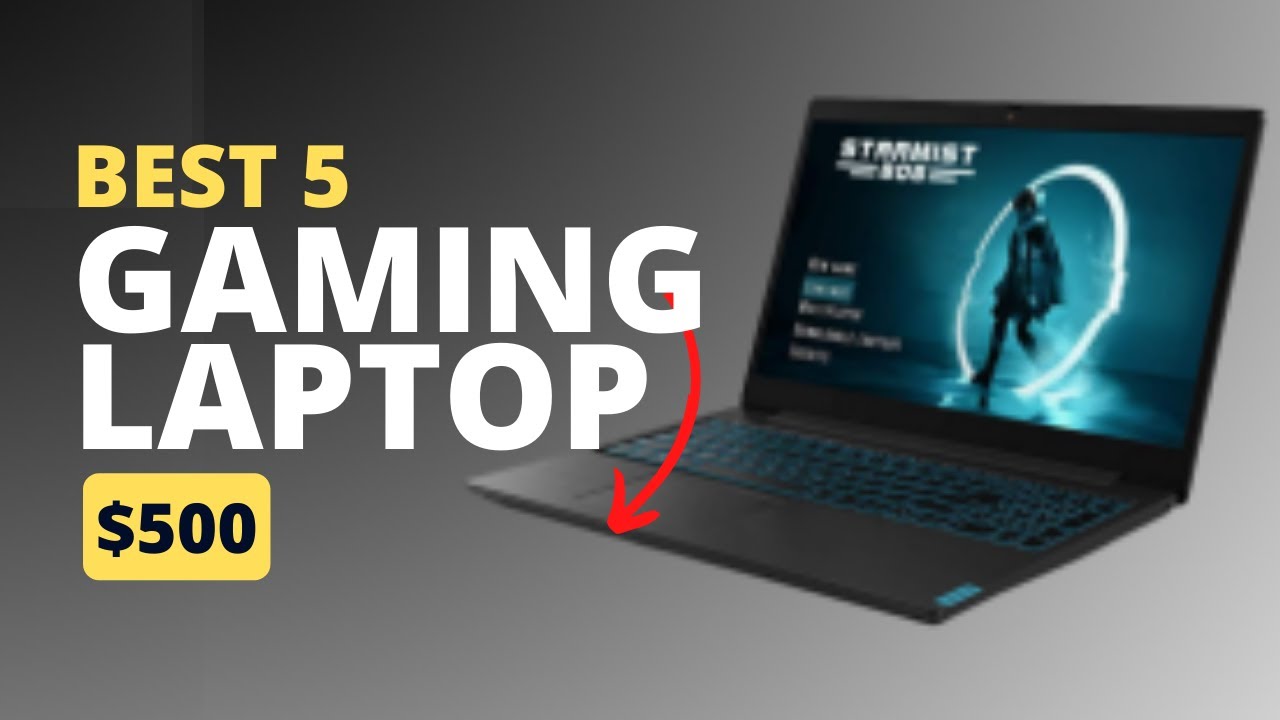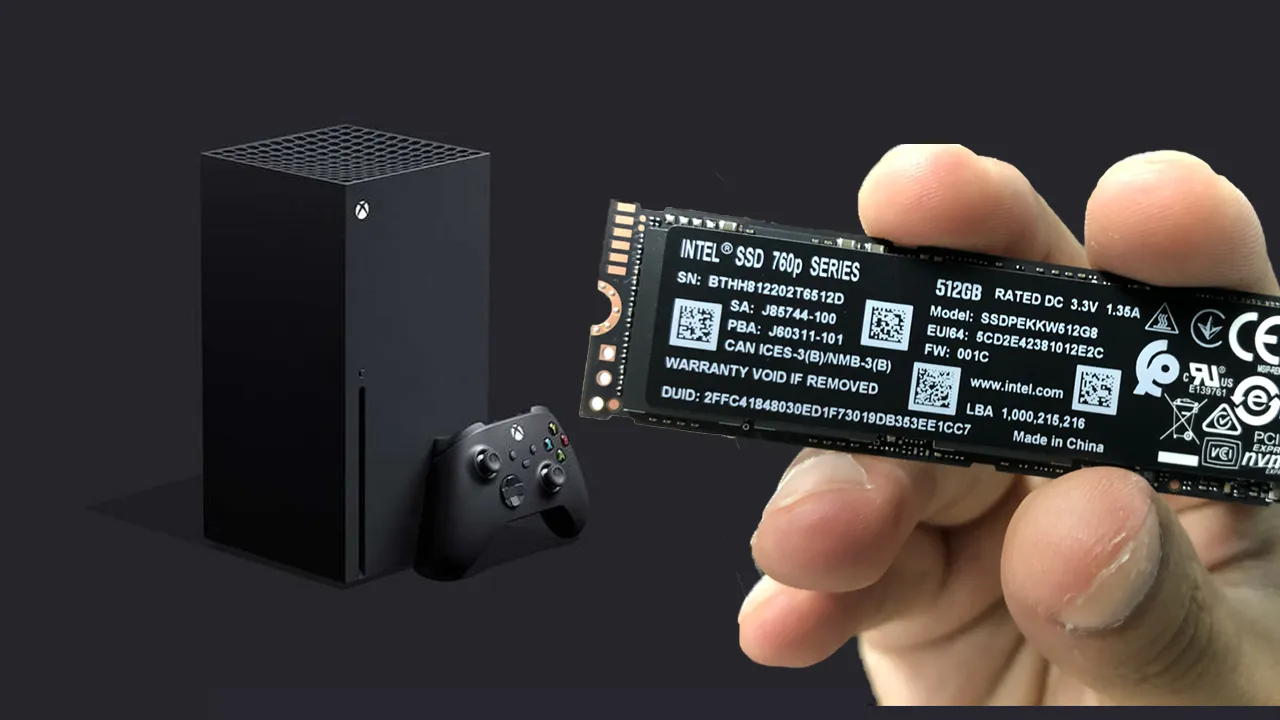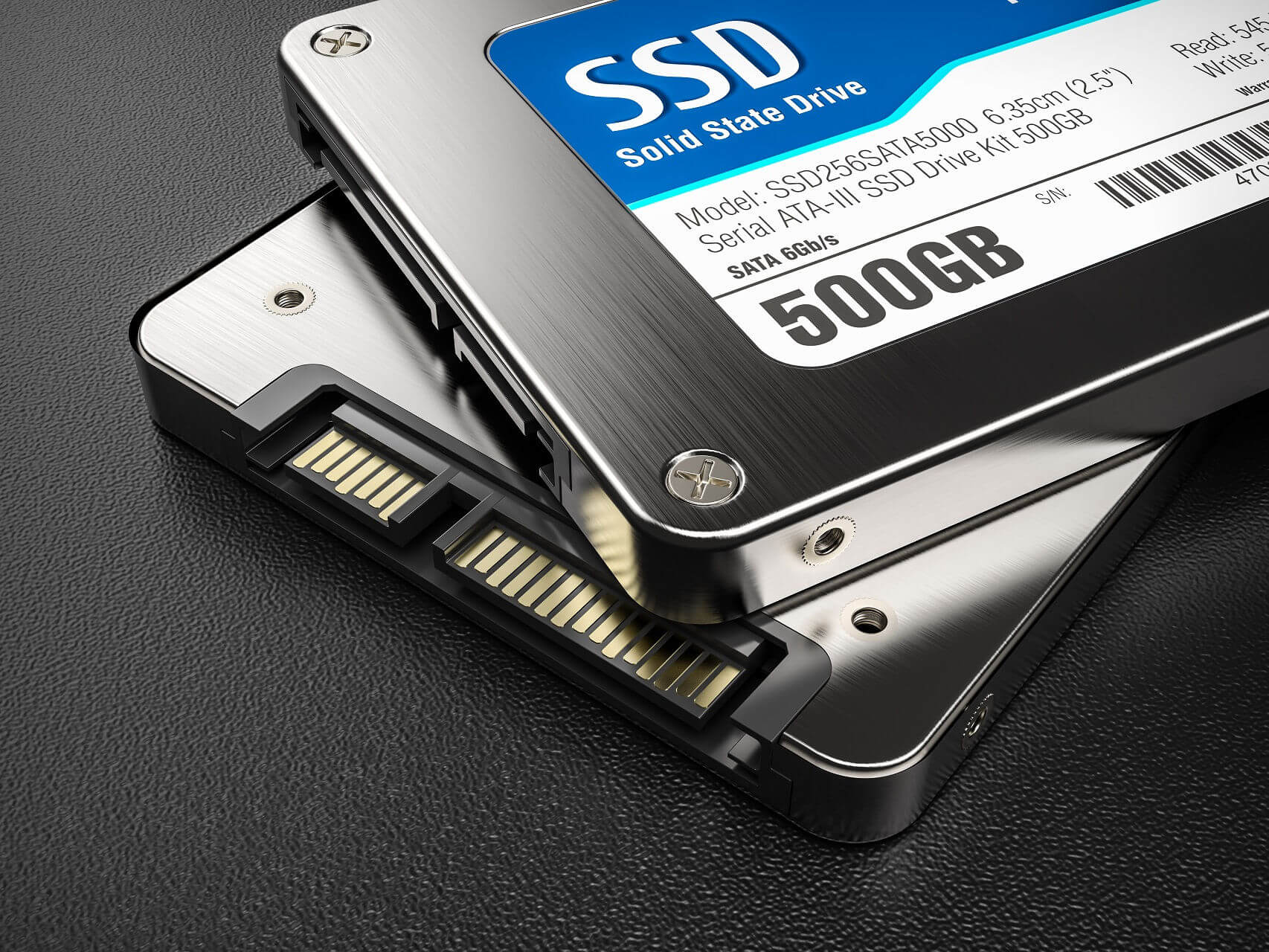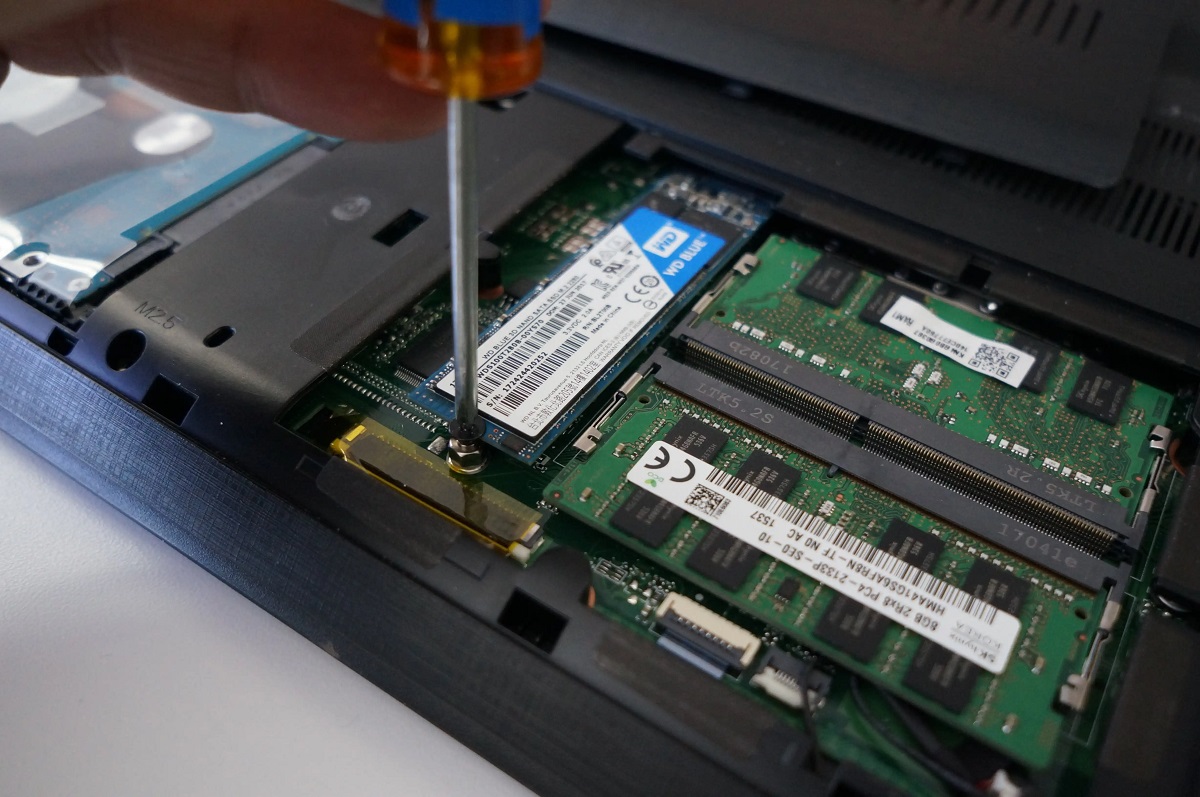Introduction
Welcome to the ultimate guide on how to pick the perfect SSD! If you’re looking to upgrade your storage solution, an SSD (Solid State Drive) is undoubtedly the way to go. Gone are the days of slow and cumbersome traditional hard drives – SSDs offer lightning-fast speeds, improved performance, and increased reliability.
In this guide, we will explore everything you need to know about choosing the right SSD for your needs. Whether you’re a gamer seeking faster load times, a content creator looking for quick file transfers, or a professional in need of a reliable storage solution, we’ve got you covered.
Before we delve into the details, let’s take a moment to understand what exactly an SSD is and why it’s such a game-changer in the world of storage technology.
An SSD, as the name suggests, is a solid-state drive that uses non-volatile memory to store data. Unlike traditional hard drives, which rely on spinning disks and mechanical components, SSDs use flash memory to store, access, and retrieve data quickly. This makes them significantly faster, more durable, and less prone to damage from physical shock.
Now that you have a basic understanding of what an SSD is, let’s explore the numerous benefits they offer over traditional hard drives and why you should consider making the switch.
What is an SSD?
To understand the benefits of using an SSD, it’s essential to grasp the core concept of what an SSD actually is. As mentioned earlier, SSD stands for Solid State Drive. Unlike traditional hard drives, which use mechanical parts to store and retrieve data, SSDs utilize flash memory chips to store information electronically.
The architecture of an SSD consists of NAND flash memory chips grouped together on a printed circuit board (PCB), with a controller that manages the data flow between the computer and the memory chips. This setup eliminates the need for moving parts, enabling SSDs to provide faster access times, improved performance, and reduced power consumption compared to traditional hard drives.
SSDs also offer a significant advantage in terms of durability and reliability. Because there are no spinning disks or read/write heads, SSDs are more resistant to physical shocks and vibrations. As a result, they are less prone to mechanical failures and data loss, making them a more secure storage option.
Another crucial aspect of SSDs is their ability to access data quickly. Traditional hard drives have to spin up the disks and physically move read/write heads to access data, whereas SSDs can access any data cell instantly. This results in significantly faster boot times, quicker file transfers, and reduced loading times for applications and games.
Furthermore, SSDs contribute to a quieter and cooler computing experience. Since there are no moving parts, SSDs generate less heat and produce virtually no noise. This not only improves the overall system performance but also enhances the user experience by providing a more comfortable working environment.
In summary, an SSD is a non-volatile storage device that uses flash memory technology to store and retrieve data. Its lack of moving parts contributes to its speed, durability, reliability, and efficient power consumption. With these advantages in mind, it’s clear that an SSD is a superior choice for anyone looking to enhance their computer’s performance and storage capabilities.
Benefits of using an SSD
Using an SSD offers numerous advantages over traditional hard drives. Here are some of the key benefits that make SSDs a preferred choice for many computer users:
- Faster Performance: One of the most significant benefits of an SSD is its lightning-fast performance. SSDs have faster read and write speeds compared to traditional hard drives, resulting in quicker boot times, reduced application load times, and faster file transfers. This enhanced speed is especially beneficial for tasks that involve intensive data processing, such as gaming, video editing, and large file transfers.
- Improved System Responsiveness: With an SSD, your computer will feel much more responsive and snappy. Applications will launch quickly, and you’ll experience smoother multitasking. SSDs also excel at handling random read/write operations, resulting in a more stable computing experience and reduced lag.
- Enhanced Durability: SSDs are built to withstand shocks, vibrations, and extreme temperature variations, making them more durable than traditional hard drives. Without any moving parts, there is no risk of mechanical failure due to wear and tear. This durability ensures that your data remains secure and accessible even in demanding environments.
- Energy Efficiency: SSDs consume less power compared to traditional hard drives. Reduced power consumption helps to extend battery life in laptops and reduces energy costs for desktop computers. This energy efficiency is not only environmentally friendly but also contributes to a cooler and quieter computing experience.
- No Noise: Traditional hard drives produce noise due to the spinning disks and moving parts. In contrast, SSDs are completely silent since they have no moving components. This absence of noise provides a more peaceful working environment and enhances the overall user experience.
- Compact and Lightweight: SSDs come in compact form factors, allowing for easy installation in laptops, desktops, and other devices. Their lightweight design makes them ideal for portable devices, enabling increased mobility without sacrificing performance or storage capacity.
In summary, using an SSD provides significant advantages, including faster performance, improved system responsiveness, enhanced durability, energy efficiency, silent operation, and compactness. These benefits make SSDs a worthwhile investment for anyone seeking a reliable, high-performance, and long-lasting storage solution.
Factors to consider when choosing an SSD
When choosing an SSD, it’s important to consider several factors to ensure that you select the right one for your needs. Here are some key factors to keep in mind:
- Storage Capacity: The storage capacity of an SSD determines how much data it can hold. Consider your storage requirements, including the size of your operating system, applications, and files, to determine the appropriate capacity. SSDs are available in a wide range of options, from smaller capacities like 128GB or 256GB to larger sizes like 1TB or 2TB.
- Interface Type: SSDs use different interface types to connect to your computer. The most common interfaces are SATA (Serial ATA), which offers good performance for most users, and NVMe (Non-Volatile Memory Express), which provides faster speeds for high-performance systems. Check your motherboard’s compatibility and available slots to ensure that your chosen SSD interface is compatible.
- Read and Write Speeds: SSDs have varying read and write speeds, which determine how quickly data can be accessed or transferred. Faster speeds result in improved overall system performance. Pay attention to both sequential read/write speeds, which measure large file transfers, and random read/write speeds, which affect smaller file transfers and multitasking performance.
- Durability and Lifespan: Different SSDs have varying levels of durability and lifespan. Some SSDs are designed for heavy use and are more resilient to wear and tear, while others may have a shorter lifespan. Consider your usage patterns and workload to ensure that the SSD you choose can handle your needs and is reliable over time.
- Price: SSDs come in a range of prices, depending on their performance, capacity, and brand. Set a budget and balance your requirements with the available options. It’s important to strike a balance between cost and performance to get the best value for your investment.
- Compatibility and Support: Ensure that the SSD you choose is compatible with your system’s operating system and hardware specifications. Check for any specific requirements or limitations, especially when considering newer interfaces like NVMe. Additionally, look for SSDs that come with good manufacturer support and firmware updates to ensure long-term reliability and compatibility.
- Additional Features and Software: Some SSDs come with additional features and software that can enhance the user experience. These may include encryption capabilities, drive management tools, or software that optimizes the SSD’s performance. Consider whether these extra features are important to you and whether they align with your specific needs.
By considering these factors when choosing an SSD, you can make an informed decision that will meet your storage requirements and provide the best performance and reliability for your system.
Storage Capacity
The storage capacity of an SSD is an important factor to consider when choosing the right one for your needs. It determines how much data you can store on the drive, including your operating system, applications, files, and media. SSDs are available in a wide range of storage capacities, allowing you to choose the size that best suits your requirements. Here are some things to consider when determining the storage capacity you need:
- Operating System: The size of your operating system plays a significant role in determining the minimum storage capacity you’ll need. Windows, macOS, and Linux operating systems typically require at least 20-30GB of storage space, although this can vary depending on the version and additional software you have installed.
- Applications: Consider the size of the applications you frequently use. Software such as video editing tools, graphic design software, and games often require a significant amount of storage space. If you work with large files or have resource-intensive applications, you may require a larger storage capacity to accommodate them.
- Files and Media: Take into account the size of your files and media collection, including documents, photos, videos, and music. If you have a large media library or work with large files, such as high-resolution videos or RAW images, you may need a larger storage capacity to ensure you have ample space for all your files.
- Future Growth: Consider your future storage needs. If you plan to expand your software collection, create more media content, or store large files, it’s wise to choose an SSD with a larger storage capacity to accommodate potential future growth. This can help prevent the need to upgrade or replace the SSD sooner than necessary.
- Budget: Storage capacity directly affects the price of an SSD. Larger capacity drives tend to be more expensive. Set a budget and balance your storage requirements with the available options. If your budget is limited, you may need to prioritize and determine the essential storage capacity for your immediate needs.
Ultimately, the right storage capacity for your SSD depends on your specific needs and usage patterns. Consider the size of your operating system, applications, files, and media, as well as any future growth you anticipate. By taking these factors into account and balancing them with your budget, you can choose an SSD with the optimal storage capacity to meet your requirements.
Interface Type
The interface type is a crucial factor to consider when choosing an SSD. It determines how the SSD connects to your computer and affects its performance and compatibility. There are two common interface types for SSDs: SATA (Serial ATA) and NVMe (Non-Volatile Memory Express). Understanding the differences between these interfaces will help you make an informed decision when selecting an SSD for your system.
SATA (Serial ATA): SATA is the most widely used interface type for SSDs and has been in existence for many years. It provides a reliable and affordable option for most users. SATA III (6.0 Gbps) is the latest standard and offers sufficient performance for everyday computing needs. SATA SSDs are compatible with most computers and offer faster speeds compared to traditional hard drives. However, they are limited by the SATA interface’s maximum bandwidth, which can lead to lower performance compared to NVMe SSDs.
NVMe (Non-Volatile Memory Express): NVMe is a newer and faster interface type designed specifically for SSDs. It leverages the PCIe (Peripheral Component Interconnect Express) bus, offering significantly higher bandwidth and lower latency compared to SATA. NVMe SSDs can deliver blazing-fast read and write speeds, making them ideal for demanding tasks such as data-intensive applications, gaming, and content creation. However, it’s essential to ensure that your motherboard and system support NVMe before choosing this interface type.
When choosing between SATA and NVMe SSDs, consider your specific needs and use cases. If you primarily use your computer for everyday tasks, web browsing, and productivity applications, a SATA SSD will provide ample performance. On the other hand, if you require maximum speed and performance for tasks like video editing, 3D rendering, or gaming, an NVMe SSD is the better choice.
It’s important to note that the interface type also affects the physical form factor of the SSD. Most SATA SSDs use the 2.5-inch form factor, making them compatible with standard laptop and desktop drive bays. NVMe SSDs, on the other hand, come in various form factors, including M.2 and PCIe add-in card (AIC), enabling them to be installed directly on the motherboard or in compatible slots.
In summary, SATA and NVMe are the two main interface types for SSDs. SATA SSDs offer a reliable and affordable option with good performance for everyday use, while NVMe SSDs provide faster speeds and lower latency for more demanding applications. Consider your specific needs, compatibility with your system, and budget constraints when choosing the interface type and form factor for your SSD.
Read and Write Speeds
The read and write speeds of an SSD are crucial performance indicators that directly impact overall system responsiveness, file transfer rates, and application load times. When choosing an SSD, it’s essential to understand the significance of these speeds and how they can affect your computing experience and workflow.
Sequential Read/Write Speeds: Sequential read and write speeds refer to the ability of an SSD to read and write large blocks of data in a linear manner. These speeds are typically measured in megabytes per second (MB/s) or gigabytes per second (GB/s). SSDs with higher sequential read speeds can retrieve large files or transfer data more quickly, improving tasks such as boot times, game loading, and large file transfers.
Random Read/Write Speeds: Random read and write speeds measure an SSD’s performance when accessing smaller, fragmented files or executing simultaneous read/write operations. These speeds are critical for tasks that involve multitasking, running multiple applications, or accessing numerous small files. SSDs with higher random read/write speeds can handle these operations more efficiently, resulting in smoother multitasking and improved overall system responsiveness.
It’s important to note that manufacturers often provide different speed specifications for sequential and random operations, as the two types of operations place different demands on the SSD’s controller and memory cells. Therefore, it’s crucial to consider both types of speeds when assessing an SSD’s performance capabilities.
When comparing SSDs, it’s essential to understand the real-world implications of read and write speeds. While faster speeds are generally desirable, it’s crucial to consider how these speeds align with your specific needs. For example, if you primarily use your computer for web browsing, document editing, and light multitasking, an SSD with moderate speeds might be perfectly suitable. However, if you work with large files, perform resource-intensive tasks such as video editing or gaming, or require quick access to numerous small files, you may benefit from an SSD with higher speed capabilities.
Additionally, consider the trade-off between speed and cost. SSDs with faster read and write speeds tend to be more expensive than those with lower speeds. Assess your budget and evaluate whether the performance gains are worth the price difference in your specific use case.
Ultimately, choosing an SSD with the appropriate read and write speeds depends on your specific needs and usage patterns. Evaluate the types of tasks you perform and the file sizes you work with to determine the level of speed that will provide the best performance and productivity for your requirements.
Durability and Lifespan
Durability and lifespan are important factors to consider when choosing an SSD. Unlike traditional hard drives, SSDs do not have any moving parts, which makes them more durable and less susceptible to mechanical failures. However, it’s still important to understand the durability and lifespan of an SSD to ensure its long-term reliability and performance.
Resistance to Shock and Vibration: SSDs are inherently more resistant to shock and vibrations compared to traditional hard drives. This is because SSDs have no moving parts, such as spinning disks or read/write heads, that can be easily damaged by physical impact or vibration. The absence of these moving components contributes to the overall durability of SSDs and makes them more suitable for portable devices and rugged environments.
Endurance and Wear-Leveling: Every SSD has a finite number of program/erase (P/E) cycles, which refers to how many times data can be written and erased on the drive. This is determined by the type of NAND flash memory used in the SSD. However, modern SSDs are designed with wear-leveling algorithms that distribute write operations evenly across the memory cells, ensuring that each cell wears out at a similar rate. This helps to maximize the lifespan and endurance of the SSD.
Drive Health Monitoring: Many SSDs come with built-in health monitoring features that can provide information about the drive’s remaining lifespan and performance status. This allows users to gauge the health of their SSD and plan for a replacement or backup strategy in case of any impending issues. Monitoring tools or software provided by the manufacturer can help in assessing the overall health and performance of an SSD.
When it comes to durability and lifespan, it’s important to keep in mind that not all SSDs are created equal. Higher-end SSDs generally have more advanced technologies and features that contribute to improved durability and longevity. Therefore, it’s crucial to choose SSDs from reputable brands that have a track record of reliable products and positive customer reviews.
It is also worth noting that the actual lifespan of an SSD depends on various factors, such as usage patterns, operating temperatures, and the workload placed on the drive. SSDs used for heavy write-intensive tasks, like server workloads or constant data transfers, may wear out faster compared to SSDs used for typical consumer computing needs. However, for most users, SSDs have a lifespan that exceeds the average lifespan of traditional hard drives.
In summary, while SSDs offer inherent durability benefits, it’s still important to consider factors such as resistance to shock and vibration, drive endurance and wear-leveling features, and drive health monitoring tools when choosing an SSD. By selecting an SSD from a reliable brand and understanding its expected lifespan and durability, you can ensure that your data remains secure and accessible for years to come.
Price
Price is an important consideration when choosing an SSD. While SSDs have become more affordable over the years, they still tend to be more expensive than traditional hard drives. Understanding the relationship between price and performance can help you determine the best value for your needs and budget.
The cost of an SSD depends on several factors, including storage capacity, interface type, speed, and brand. Higher-capacity SSDs generally come with a higher price tag, as do SSDs with faster read and write speeds or newer interface types like NVMe. Established and reputable brands often charge a premium for their products due to their reliability, customer support, and warranty offerings.
When pricing SSDs, it’s important to consider the cost per gigabyte (GB). For example, a 1TB SSD might cost more than a 500GB SSD, but the cost per GB is typically lower for the larger capacity drive. This can help you compare SSDs of different capacities and determine their value based on the amount of storage you are getting for your money.
It’s also worth noting that prices for SSDs can fluctuate over time due to factors such as market demand, advancements in technology, and new product releases. It’s a good idea to keep an eye on pricing trends and consider timing your purchase to take advantage of any discounts or promotional offers.
When considering the price of an SSD, it’s important to strike a balance between your budget and the performance, capacity, and reliability that your specific needs require. While it’s tempting to opt for the cheapest option available, it’s crucial to ensure that the SSD meets your performance expectations and offers adequate storage capacity for your files and applications.
Setting a budget and considering your specific requirements can help guide your purchasing decision. Determine your storage needs, performance requirements, and preferred features to narrow down your options and find an SSD that provides the best value within your budget constraints.
While price is an important consideration, it’s also essential to factor in the long-term benefits of an SSD. The improved performance, faster load times, and increased durability offered by SSDs can greatly enhance your computing experience. Ultimately, investing in a reliable and high-quality SSD that meets your needs and provides good value can be a wise choice for long-term satisfaction and productivity.
Compatibility and Support
When choosing an SSD, it’s crucial to consider compatibility with your system and the level of support provided by the manufacturer. Ensuring that the SSD is compatible with your hardware and software will prevent compatibility issues and make the installation process smoother. Additionally, having reliable support from the manufacturer can provide peace of mind and assistance when needed.
Hardware Compatibility: Before purchasing an SSD, check the specifications and requirements of your computer’s motherboard or laptop to ensure compatibility. Consider factors such as the supported interface type (SATA or NVMe), form factor (2.5-inch, M.2, or PCIe), and available slots. It’s also important to verify whether any firmware updates or driver installations are required for optimal performance and compatibility.
Operating System Compatibility: Ensure that the SSD you choose is compatible with your operating system. Most modern SSDs are compatible with popular operating systems such as Windows, macOS, and Linux. However, some older operating systems may require additional drivers or firmware updates. Checking the manufacturer’s website or contacting their support can help confirm if the SSD is compatible with your specific OS version.
Manufacturer Support: The level of support provided by the SSD manufacturer is another crucial consideration. Look for a brand that has a reputation for good customer support and timely firmware updates. Responsive and knowledgeable support can be invaluable if you encounter any issues during installation, configuration, or usage of the SSD. Additionally, reliable support ensures that you receive important firmware and software updates to improve the SSD’s performance and compatibility.
User Reviews and Recommendations: User reviews and recommendations from reliable sources can provide insights into the compatibility and support offered by different SSD brands. Look for feedback regarding compatibility with specific hardware configurations or operating systems. User forums and online communities can also be valuable resources for gathering information and troubleshooting compatibility issues before making a purchase.
By choosing an SSD that is compatible with your system and backed by reliable manufacturer support, you can minimize compatibility issues and have reassurance that assistance is available if needed. Checking hardware and operating system compatibility, researching manufacturer support and reputation, and seeking user feedback are all crucial steps in ensuring a smooth and supported SSD experience.
Remember to consult the manufacturer’s documentation, user manuals, and technical specifications to ensure the compatibility of the SSD with your system. In case of any doubts or questions, don’t hesitate to reach out to the manufacturer’s support channels to seek clarification and assistance in making an informed decision about the compatibility of the SSD.
Additional Features and Software
When choosing an SSD, it’s worth considering any additional features and software that may come bundled with the drive. These extras can enhance the user experience and provide added value. While not essential for everyone, they may be beneficial depending on your specific needs and preferences.
Encryption and Security Features: Some SSDs come with built-in encryption capabilities to secure your data. These features, such as hardware-based encryption or Self-Encrypting Drives (SED), can provide an extra layer of protection to safeguard sensitive information. If data security is a priority for you, choosing an SSD with encryption features can help ensure the confidentiality of your data.
Drive Management Tools: Certain SSDs come with proprietary drive management tools or software. These tools allow you to monitor the health and performance of your SSD, update firmware, and optimize settings for improved performance. Drive management tools can provide valuable insights into the overall condition of your SSD and help you maximize its lifespan and performance.
Cache and Caching Software: Some SSDs feature cache technologies or come bundled with caching software. Caching involves temporarily storing frequently accessed data in a fast cache area for quicker retrieval. This can improve the overall system performance by accelerating read and write operations. If you require faster access to frequently used files or applications, a SSD with caching technology or software can provide an extra performance boost.
Software Suites and Data Migration: Certain SSDs include software suites that offer additional functionality, such as data migration tools. These tools can aid in transferring your operating system, applications, and data from your existing storage device to the new SSD. This simplifies the migration process and ensures a seamless transition, saving you time and effort.
Gaming and Performance Optimization: Some SSDs are specifically designed for gamers or offer specialized software to optimize gaming performance. These features may include enhanced data caching, real-time drive monitoring, or game-specific settings. If gaming performance is a priority, choosing an SSD tailored for gaming or with performance optimization software may provide a competitive edge and better gaming experience.
Additional features and software can enhance the functionality and performance of an SSD. Assess your specific needs and preferences to determine which additional features are relevant to you. Consider the level of importance you assign to factors such as data security, drive management, caching, data migration, or gaming optimization. These features can provide added convenience, efficiency, and performance enhancements, making your SSD choice more personalized and tailored to your requirements.
It’s important to note that while these additional features and software can be beneficial, they should not be the sole basis for choosing an SSD. Evaluate the overall performance, reliability, and compatibility of the SSD itself, taking into account your specific needs and usage patterns. A well-rounded SSD with solid performance and reliability should be the primary consideration, with any additional features acting as a bonus.
Conclusion
Choosing the right SSD for your needs is a crucial decision that can greatly enhance your computing experience. SSDs offer numerous benefits over traditional hard drives, including faster performance, improved system responsiveness, enhanced durability, and energy efficiency. By considering various factors, you can make an informed decision that meets your requirements and provides the best value for your investment.
Consider the storage capacity you need, keeping in mind your operating system, applications, and files. Evaluate the interface type that best suits your requirements, whether it’s SATA for general use or NVMe for high-performance applications. Assess the read and write speeds to ensure optimal system performance and smooth multitasking. Pay attention to the durability and lifespan of the SSD, including its resistance to shock and vibration and the endurance of its memory cells.
Price is an important consideration, and balancing your budget with the desired performance and features of the SSD is crucial. Verify compatibility with your hardware and operating system to prevent any compatibility issues. Additionally, consider the level of support and reliability offered by the manufacturer, ensuring that you have assistance and firmware updates when needed. Explore any additional features or software that may enhance your experience, such as encryption capabilities or drive management tools.
Remember that the perfect SSD will vary depending on individual needs and preferences. One size does not fit all, so it’s essential to assess your specific requirements and usage patterns. Careful consideration of these factors will help you choose an SSD that provides the best performance, reliability, and value for your specific needs.
Investing in a high-quality SSD can significantly improve your system’s speed, responsiveness, and storage capabilities. Whether you’re a casual user, a content creator, or a gaming enthusiast, selecting the right SSD will enhance your daily tasks and elevate your overall computing experience. Keep these considerations in mind, do thorough research, and make an informed decision that aligns with your expectations and requirements for storage performance.







